Case Studies.
Add Case Study
Our Case Study database tracks 22,657 case studies in the global enterprise technology ecosystem.
Filters allow you to explore case studies quickly and efficiently.
Download Excel
Filters
-
(6,653)
- (2,601)
- (2,127)
- (945)
- View all
-
(5,642)
- (2,469)
- (1,692)
- (826)
- View all
-
(5,571)
- (2,178)
- (1,766)
- (643)
- View all
-
(5,247)
- (2,179)
- (1,715)
- (1,321)
- View all
-
(2,881)
- (1,448)
- (574)
- (376)
- View all
- View all 15 Technologies
- (1,985)
- (1,985)
- (1,915)
- (1,679)
- (1,629)
- View all 42 Industries
- (8,728)
- (4,742)
- (3,618)
- (3,233)
- (2,947)
- View all 13 Functional Areas
- (3,304)
- (2,787)
- (2,603)
- (2,006)
- (1,630)
- View all 129 Use Cases
- (13,581)
- (5,296)
- (4,272)
- (3,520)
- (2,856)
- View all 9 Services
- (504)
- (432)
- (416)
- (382)
- (301)
- View all 1083 Suppliers
Selected Filters
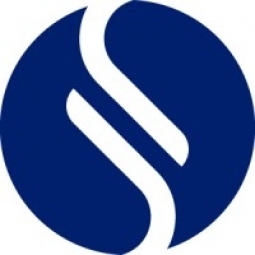
|
Tikkurila Ensures Compliance Global Growth With Standardized Safety Documentation Process
Tikkurila, a paint manufacturing company, has been providing consumers and professionals with user-friendly, sustainable paint solutions for over 150 years. The company prides itself on product safety and quality, which are among the cornerstones of its operations. Tikkurila's product labeling must meet customer needs and expectations as well as regulatory requirements. The company works hard to systematically determine the health, safety, and environmental impact of the raw materials used in its paints. Product teams must develop material safety data sheets (SDS) and labels in up to 15 languages as it markets more than 2,000 products. However, Tikkurila’s facilities across 11 countries used different methods to create safety data sheets and labels, including outsourcing for translation. They realized that they needed a more efficient way to create their SDSs if they were going to continue to grow.
|
|
|

|
Anodot Handles the Most Pressing Printing Problems
The digital printing company sells commercial digital presses for digital printing of items such as pictures, labels, large format prints, etc. Its customers are print houses around the world. The business model is that the customers purchase the printing press up front and also pay per page printed. The company provides the ink and spare parts and most of the support. Whenever a press is down, the company loses both in revenue (due to fewer prints) and in support costs. Customer satisfaction also suffers as a result. Typically, whenever there was a problem, the customers’ first instinct would be to start replacing spare parts that the company provides, and only afterwards they might call support. The initial support call costs the company several hundred dollars, and still may not resolve the problem. If an issue persisted or recurred, an expert would be sent (at the cost to the company of a few thousands of dollars per call). In this process, the company lost revenue from presses that were malfunctioning, paid a lot in support and parts, and also eroded its customer satisfaction.
|
|
|

|
Uncovering Hidden Insights: Redis Labs Adopts AI-Driven Business Monitoring to Support Stand-Out Customer Success
Redis Labs, a company in a high-growth phase, was acquiring many enterprise customers in the Fortune 500 and Global 1000. It needed to scale its customer service while maximizing efficiency and minimizing time and resources. As Redis Labs scaled, it became responsible for managing tens of thousands of databases and could no longer manually monitor their usage patterns individually. The company wanted their monitoring to operate on a more granular level, picking up incidents that might otherwise go unnoticed. With the growing volume of databases also came a wider variety of usage patterns, which couldn’t be properly tracked with the fixed alerting that had proved sufficient in the company’s early days.
|
|
|

|
Payoneer Sees Unlimited Potential for the Insights Anodot Can Provide
Payoneer, a global cross-border payments platform, was facing several challenges. They needed to replace their traditional monitoring system with one that could scale with their rapidly growing business. They also wanted to provide mission-critical monitoring-as-a-service to internal groups. Another challenge was to eliminate wasted engineering effort by preventing false positives on operational metrics. Lastly, they wanted to prevent revenue loss by accurately forecasting demand for funds. Given that the company’s operations span so many countries and involve a massive number of partners and their APIs, Payoneer continuously monitors nearly 200,000 metrics to ensure it meets SLAs and general reliability and performance targets.
|
|
|
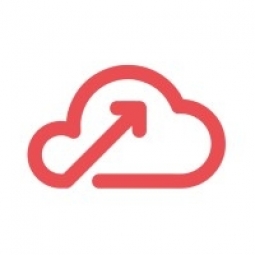
|
Supercharging Time to Analysis at Harry’s
Harry’s, a leader in the direct-to-consumer industry, faced a challenge with the explosion of new, disparate data feeds due to the diversity of product lines, retail outlets, and customers. The data science team needed to expedite the process of ingesting, transforming, and delivering these data feeds into a robust shared data model that connects all brand information across every retail delivery model. The retail analytics team needed a faster, simpler way to get new analytics up and running, and a platform to ingest and transform these disparate data feeds in a low-code sandbox environment. With a current ecosystem of mostly homegrown and open source solutions that rely on a heavily burdened data engineering team, it could take weeks to get new, critical retail data sources connected to Looker, the company’s business intelligence and analytics tool of choice.
|
|
|
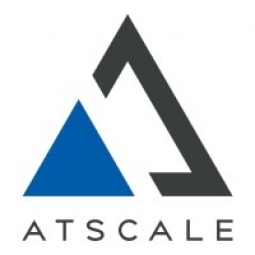
|
bol.com Reduces Cloud Analytics Costs by 91% with AtScale
As the top online retailer in the Netherlands and Belgium, bol.com has grown massively in a short amount of time. As the company scaled, the data began evaluating alternatives to their overloaded Hadoop cluster that was taking too long to run some jobs. At the time, the company’s analysts were using Platfora for data preparation and visualization. Shortly after the go-live, Platfora announced its acquisition by Workday and with that the discontinuation of the product. With this as a catalyst, bol.com began looking for a new solution to support their BI and analytics program. Self-service was a top priority for the bol.com team. As they looked for new technology partners, they wanted to integrate a semantic layer solution that could cover all data assets, now and in the future. Further, they wanted to ensure compatibility with whatever BI and analysis tools they may use in the future.
|
|
|

|
Fortune 50 Retailer Modernizes Analytics with AtScale
A Fortune 50 retailer launched an initiative to modernize their analytics infrastructure with the primary goal of increasing the flow of data-driven insights that could lead to improved margins, optimization of product mix and better inventory management. Their challenge was to enable better analytics at scale while ensuring efficiency and consistency across a broad audience of data consumers. With thousands of users performing analytics using a diverse set of legacy platforms, including SQL Server Analysis Services (SSAS), Teradata, and Hadoop, the existing infrastructure was expensive and could not scale at the rate of their business. To empower their users, the data team needed a scalable semantic layer solution that could serve the needs of internal users as well as suppliers that rely on a shared view of inventory. The solution needed to scale, needed to support security and access control policies, and needed to support the organization’s migration from on-premise legacy data platforms to a cloud data warehouse.
|
|
|
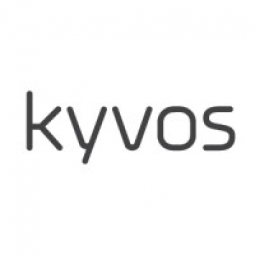
|
Pharmacy Chain Transforms SCM with Instant Insights on 315 Billion Records
The pharmacy chain, with over 9,500 stores across the US, 20,000 suppliers, and 1 million products, generated 17 billion records of transaction-level data each day. They wanted to analyze two years of supply chain data to drive their business decisions. However, they faced several challenges in analyzing the continuously growing supply chain data. Their data was coming from a wide variety of internal and external sources and living in multiple applications such as Netezza, Oracle, Excel, and more. Despite consolidating it on an on-premise data lake, they faced several challenges in analyzing the continuously growing supply chain data. Some of the key challenges they faced included hundreds of billions of records from 50+ sources, inability to scale up to billions of rows, slow response times kept business users waiting for days to get insights, and diagnostics were difficult as they could not drill down to granular details.
|
|
|

|
OLAP Modernization at a Global Investment Bank
A leading multinational investment bank and financial services company operating in 50 countries wanted to establish an executive-level global view of its financial data to support Management Discussion & Analysis (MD&A) for their C-suite. Their executives needed a single dashboard where they could measure the company’s performance on a comprehensive set of real-time measures and drill down to the lowest levels of granularity instantly. They also wanted to enable quick ad hoc analysis for 700 analysts located across the globe. Their reporting requirements were quite complex, and they needed a single view across all international businesses. It was difficult to use their existing BI environment to model complex financial KPIs and build reports on massive financial records. With no tolerance for latency, it became challenging to meet the high expectations and aggressive timelines from the executive team.
|
|
|
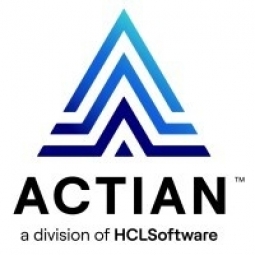
|
Lechler Caps Customer Service with Actian-Powered ERP Solution
Lechler GmbH, a German mid-sized company specializing in the manufacture of nozzles and custom spray technology solutions, needed to revamp its company-wide manufacturing technology solution. The company aimed to improve its business processes, enhance and extend its reporting options, and ensure flexibility in its database administration. The ultimate goal was to continuously improve customer service and minimize the time from order to delivery. Prior to the implementation of the new system, Lechler was working with a large data processing center which was very inflexible.
|
|
|

|
Data Integration and PIDX Standards Improve Orders-to-Cash Cycle
Pinnergy, a diversified energy services company, was struggling with an outdated, manually-driven invoicing process. Invoices moved from the dispatch system through customer signoff and then had to be entered into customers’ online electronic data interchange (EDI) systems. This process was tedious and involved significant duplication of effort and data, increasing the potential for errors and disputed invoices. As Pinnergy’s business grew, order management became more complex, with more customers and a higher volume of transactions moving through multiple applications with various data formats to support and no common standard for data exchange. The invoicing process became a bottleneck, resulting in high cost per transaction and high accounts receivable aging.
|
|
|

|
Banca IFIS Banks on Actian Ingres Database for Big Savings and Scalability
Banca IFIS, an independent Italian bank specializing in financing enterprises, faced a challenge when new Italian banking regulations imposed a demand for a higher level of security and data protection. The bank had to evolve its core business application to meet these new challenges. The main issue was the limited time frame available to implement the new version of their application to meet the timeline given to the bank. In less than one year, they had to deliver a cost-effective and scalable solution, a fully unicode enabled database and application to support Banca IFIS expansion, high availability, and a secured infrastructure fulfilling disaster recovery targets imposed by new banking regulations.
|
|
|

|
British Friendly reduces risk and guarantees system availability with Actian Services and Enterprise Management Appliance (EMA)
British Friendly, an income protection mutual company, was running an outdated version of the Ingres database (v2.6) for their M2000 insurance application. The company wanted to upgrade to Ingres v9.2.3 to benefit from the database’s new functionality and new hardware. However, they only had one administrator to manage the M2000 insurance application and lacked the internal resources needed to both upgrade to v.9.2.3 or continue to monitor the Ingres database to ensure their applications and associated systems continue to run smoothly. Furthermore, the company needed to ensure that their internal risk levels were not compromised by upgrading their internal systems.
|
|
|

|
Connecting Machines and Devices
Echelon is a pioneer and world leader in control networks and embedded control networks, which connect machines and other electronic devices. They needed an embedded database compatible with the object-oriented application model. A predecessor of LNS was introduced in 1991, using procedural code and an embedded record oriented/ relational data storage toolkit. As object-oriented programming began to emerge, the team realized that using object-oriented programming was the most productive way to add features and power to the system. At the same time, the team realized that the record oriented storage toolkit was an obstacle to object-oriented development and a big usability problem because it exposed the embedded database structure to their broad OEM programmer community.
|
|
|

|
Increasing Capacity with Versant Object Database and RailEdge® Movement Planner
The Federal Railroad Administration is expecting railroad freight traffic to double by 2020. However, the U.S. railroad infrastructure cannot be expanded to keep pace with this demand. Railroads are confronted with meeting this demand in some other way. GE Transportation Systems, the global technology leader and supplier to the railroad industry, is addressing the problem with RailEdge® Movement Planner, an object-oriented software system incorporating the Versant Object Database. GE Transportation’s customer, Norfolk Southern Railroad, operates 2,500 trains per day over a 21,000-mile system serving every major container port in the eastern United States. Norfolk Southern expects to increase railroad capacity, velocity and efficiency with no new tracks, to increase average network train speed 10 to 20 percent, and to save millions of dollars in capital and expense.
|
|
|

|
On the hunt for the next big medical discovery: Oxford University Clinical Trial Service Unit reduces the data supply process from days to just minutes thanks to Actian Vectorwise
The Clinical Trial Service Unit and Epidemiological Studies Unit (CTSU) of the University of Oxford is involved in extensive bioresearch and healthcare studies. They extract and analyze data related to the causes, prevention, and treatment of chronic illnesses such as cancer, heart disease, and strokes. However, they faced a significant challenge when they realized that their existing database platform could not cope with the large data volumes involved in their research. The legacy platform struggled with complex queries, especially when they involved several thousand fields. The analytics could take days, which was not acceptable for the fast-paced research environment. They needed a solution that could handle high-speed analytics and deliver results within extremely fast timescales.
|
|
|

|
The Pesticides Safety Directorate Eradicates Inefficiency with Actian Ingres Database
The Pesticides Safety Directorate (PSD), an executive agency of the UK Department for Environment, Food, and Rural Affairs, was facing the challenge of keeping pace with rising regulatory challenges without increasing costs. The organization’s mission encompasses ensuring the safety, effectiveness, and regulatory compliance of plant protection products used by both industry and amateur gardeners; regulating a market worth around £450 million in the UK and a similar figure in overseas exports; and shaping UK policies on pesticide issues – all with a staff of only 200. Technology plays a vital role in making this possible. Most recently, Park’s group was called on to deliver a particularly high-profile project – enabling the electronic delivery of all services, followed by the introduction of a complete, end-to-end electronic workflow for the entire new product application and approval process.
|
|
|

|
Actian Vectorwise
The Rohatyn Group (TRG), a hedge fund based in New York, needed a solution to manage risk in the highly volatile market of hedge funds. Information about positions, pricing, and risk is critical to investment decision-making. For tactical decision-making, TRG provided analysts immediate access to the information they needed in a format that they could use through a self-service data access environment. However, the combination of market volatility and a desire to do more strategic analysis drove the need to understand how their positions had performed over time. While the existing solution provided the interactive analysis TRG was looking for, it did not have the historical data. They wanted the user tools to remain the same and the query responses to be interactive, but they needed to do the analysis on more than 1000 times the data.
|
|
|

|
Transitioning from Netezza to Actian: A Cost-effective Upgrade
The Bank’s in-house analytics solution, Netezza, had reached its end-of-life cycle and was not going to be supported by IBM or its channel partners. The Bank needed to create one data repository for all positions across all asset classes, enabling ad hoc analysis of positions and their sensitivity to market factors. The Bank also wanted greater visibility into its risk exposure. It knew that presently, managing client risk and exposure was at 20th-century levels. For example, risk and opportunity value was analyzed via batch data dumps once a day. The Bank needed greater insights, delivered in sub-minute intervals, multiple times a day. It also had additional criteria that had to be met, including improved price/performance levels, ease of development and maintenance, durability, and a palatable TCO.
|
|
|
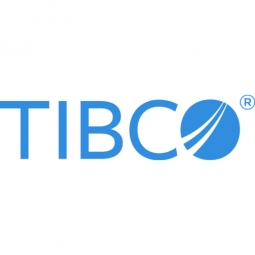
|
Customer Intelligence with Alpine Chorus
Havas Media, a fast-growing media agency with over $2 billion in annual revenue, was facing a challenge in the media buying market. Clients wanted to understand each step of the media buying process, including where their money was going, why it should be going there, and the results of their investments. Havas Media's previous approach involved a team of SQL programmers to prepare the data and SAS programmers to interrogate it. This process was not only time-consuming but also not client-facing. Havas Media was in search of a software that would allow both technical and non-technical users to easily conduct analytics and explain these findings to clients.
|
|
|

|
Business Process Optimization for Healthcare Services
The Company, a leading provider of Specialty Benefits Management solutions, was struggling with managing the extraordinary amount of data associated with benefits management in healthcare. As the number of insured members increased, it became crucial for them to leverage the constant influx of data to achieve operational efficiency. Their previous approach involved multi-month cycles with IT normalizing the data, and inconsistent ways of implementing their models into production. In order to scale their data efforts and achieve a more streamlined process, the company needed an end-to-end advanced analytics solution, from data blending to modeling.
|
|
|
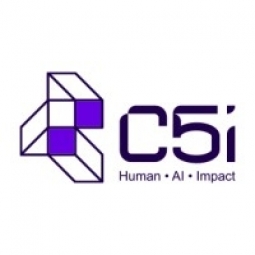
|
Set up a digital analytics hub for a leading BFSI company
The client, a leading insurance and BFSI company in Asia, was struggling to evolve from their previous platform and migrate successfully to the Adobe Marketing Cloud platform. They wanted to set up marketing channels, traffic performance, and overall site health scorecards for immediate stakeholder delivery. The client also wanted to understand the reasons for deviations between web leads to CRM fulfilled leads, which were caused due to faulty tag implementation and accounting issues.
|
|
|

|
Competitive intelligence deliverables result in significant cost and time savings
In the hyper-competitive telecom world, the client needed to find a cost-effective and efficient way to keep their divergent teams abreast of news, rumors and published research findings related to competitor product offerings, rate changes, and network developments. In addition, they needed assistance with more strategic, market opportunity assessments to fuel their new product development process. Internally, their small team struggled to find, review and distribute information consistently, even though late breaking market developments often had an immediate impact on their strategic initiatives.
|
|
|

|
Helped a global technology vendor integrate data from multiple communication channels for more effective campaigns
The client, a leading technology company, was facing several challenges. They wanted a unified view of their customers across different business lines – B2C, B2B, EPP and B2V. Insufficient customer details and incorrect data was leading to inaccurate customer targeting causing low customer conversions. Lack of integration among different databases and inability to link data among them hampered plans to create a centralized database and “single view of the customer”. They were also unable to measure the efficacy of their marketing plans.
|
|
|

|
Assessment of competition landscape for predictive maintenance
The client, a leading devices and services company in the IT industry, recognized the potential of predictive maintenance in transforming their strategic and operational environment. However, due to the industry’s infancy, the client faced challenges in understanding the competitive dynamics and the impact of predictive maintenance on their business. They wished to gain insights into the market landscape of predictive maintenance offerings, including details such as key vendors, company background, details of offerings, launch timelines, use case stories, industry focus, and list of customers.
|
|
|
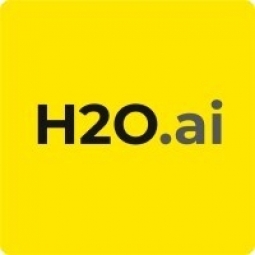
|
Operationalizing Machine Learning at Comcast
Comcast, a multinational mass media company, was facing challenges in building models on complete production datasets to improve the accuracy of their predictive analytics. They needed a solution to run models on complete production datasets as opposed to relying on sampling. The company was also looking for ways to operationalize and scale data science to match the company's volume of operations. They were dealing with issues such as extracting and integrating real-time production data that comes in different formats, using heavy computation to transform raw data into usable data sources, providing timely responses to a great number of prediction requests and continuously updating models with the latest data to keep predictions accurate.
|
|
|

|
AI Helps Property Management Company Maximize Their Business
Property Guru, a leading property management company based in Singapore, handles a large volume of listings and had looked to leverage AI and machine learning (ML) for multiple use-cases - image moderation, predicting churn, forecasting credit, measuring performance of listings. They realized early-on in their development that they needed machine learning techniques to manage user data, user retention and ensure the customer experience on their app lives up to their reputation. Doing this manually was not scaling so there was a real need to automate their ML process.
|
|
|
---nyse--hpe_1.jpg)
|
HPE SimpliVity Hyperconverged Infrastructure Case Study - MLB Network
MLB Network was facing challenges with the management of multiple solutions and vendors, which was proving to be a significant burden. They were in need of a development environment for DIAMOND, their asset management system, and core services that could take advantage of HPE SimpliVity Hyperconverged Infrastructure tools. The company was looking for a solution that could help them consolidate their data center, modernize their infrastructure, and refresh their technology. They also needed a solution for their production applications, test/dev and QA, and data migration.
|
|
|
---nyse--hpe_1.jpg)
|
Abba Technologies Chooses SimpliVity’s OmniCube
Abba Technologies, an IT services and solutions provider based in Albuquerque, New Mexico, was facing several challenges with their legacy infrastructure. The company was dealing with long backup times, multiple complex management consoles, and their infrastructure was nearing its end-of-life. The company was running Exchange, SQL, and other customer-specific applications which were becoming increasingly difficult and slow due to their outdated infrastructure. The company was faced with the decision of whether to update their existing infrastructure, which would involve a costly upgrade but allow them to avoid a complete renovation of their IT environment, or switch to a new technology that could address their goals of updating old equipment and simplifying their IT infrastructure.
|
|
|
---nyse--hpe_1.jpg)
|
Document Outsourcer Consolidates IT Infrastructure and Improves DR with SimpliVity
High Cotton’s disjointed IT environment was becoming increasingly risky, and costly to maintain and scale. The company relied on a mix of legacy equipment including HP servers, third-party storage systems, and they didn’t have any in-house data protection. Administering the fragmented environment was a manually intensive and error-prone undertaking involving a number of distinct management systems. Deploying new workloads—allocating compute and storage resources, instituting backup policies, performing restores—could take hours and weeks using the company’s legacy solutions. Even worse, disasters or equipment failures had the potential to impair critical IT services and disrupt business; restoring applications, including VMware Horizon View VDI apps, could take hours or days using the incumbent data protection solutions and methods.
|
|




